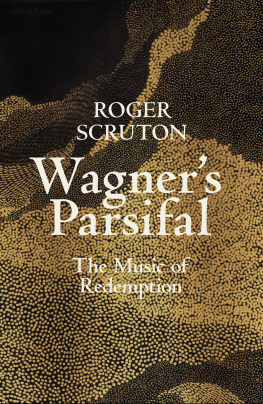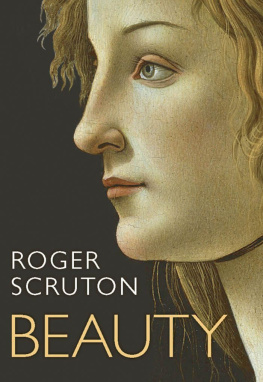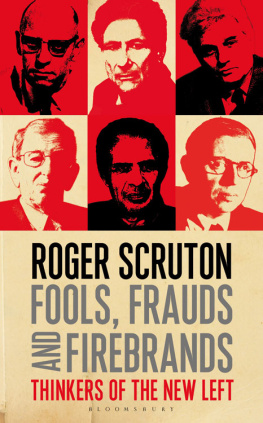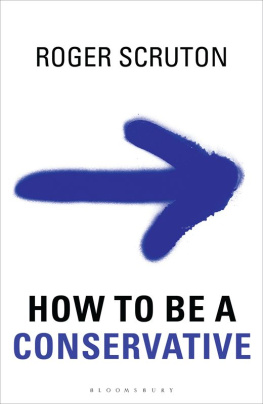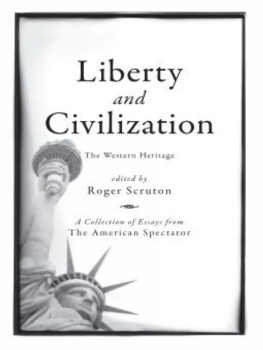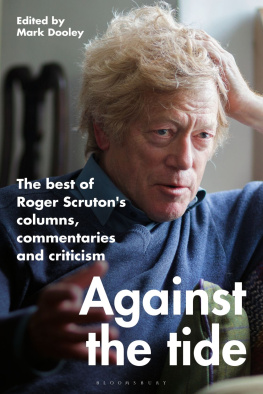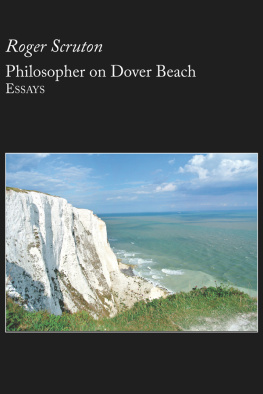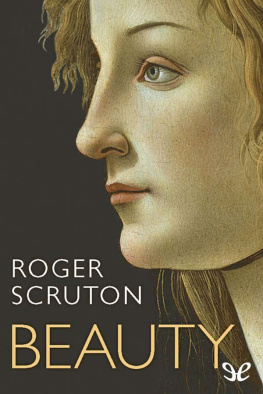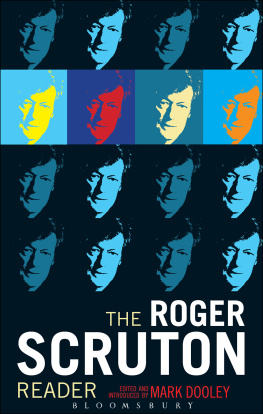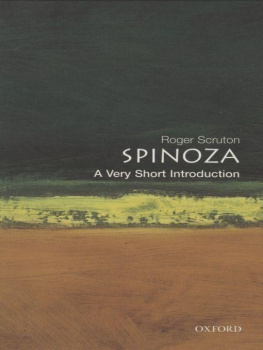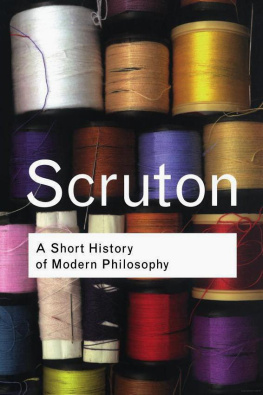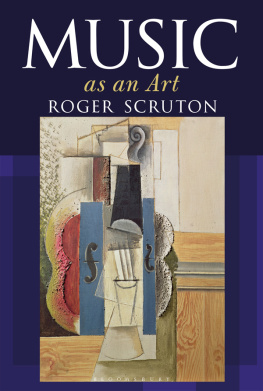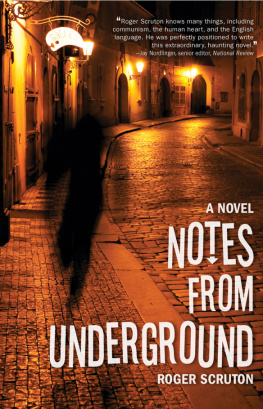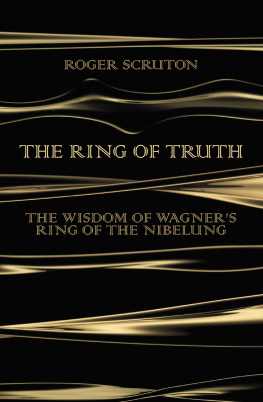Roger Scruton - Wagners Parsifal: The Music of Redemption
Here you can read online Roger Scruton - Wagners Parsifal: The Music of Redemption full text of the book (entire story) in english for free. Download pdf and epub, get meaning, cover and reviews about this ebook. year: 2020, publisher: Penguin Books, genre: Religion. Description of the work, (preface) as well as reviews are available. Best literature library LitArk.com created for fans of good reading and offers a wide selection of genres:
Romance novel
Science fiction
Adventure
Detective
Science
History
Home and family
Prose
Art
Politics
Computer
Non-fiction
Religion
Business
Children
Humor
Choose a favorite category and find really read worthwhile books. Enjoy immersion in the world of imagination, feel the emotions of the characters or learn something new for yourself, make an fascinating discovery.
- Book:Wagners Parsifal: The Music of Redemption
- Author:
- Publisher:Penguin Books
- Genre:
- Year:2020
- Rating:5 / 5
- Favourites:Add to favourites
- Your mark:
- 100
- 1
- 2
- 3
- 4
- 5
Wagners Parsifal: The Music of Redemption: summary, description and annotation
We offer to read an annotation, description, summary or preface (depends on what the author of the book "Wagners Parsifal: The Music of Redemption" wrote himself). If you haven't found the necessary information about the book — write in the comments, we will try to find it.
Wagners Parsifal: The Music of Redemption — read online for free the complete book (whole text) full work
Below is the text of the book, divided by pages. System saving the place of the last page read, allows you to conveniently read the book "Wagners Parsifal: The Music of Redemption" online for free, without having to search again every time where you left off. Put a bookmark, and you can go to the page where you finished reading at any time.
Font size:
Interval:
Bookmark:

PENGUIN BOOKS
UK | USA | Canada | Ireland | Australia
India | New Zealand | South Africa
Penguin Books is part of the Penguin Random House group of companies whose addresses can be found at global.penguinrandomhouse.com.

First published in Great Britain by Allen Lane 2020
Copyright the Estate of Roger Scruton, 2020
The moral right of the author has been asserted
ISBN: 978-0-241-41970-0
This ebook is copyright material and must not be copied, reproduced, transferred, distributed, leased, licensed or publicly performed or used in any way except as specifically permitted in writing by the publishers, as allowed under the terms and conditions under which it was purchased or as strictly permitted by applicable copyright law. Any unauthorized distribution or use of this text may be a direct infringement of the authors and publishers rights and those responsible may be liable in law accordingly.
Roger Scruton died just after completing the editorial work on this book, but he was not able to read the proofs or to check the musical examples. The publisher is most grateful to Professor Robin Holloway of Gonville & Caius College, Cambridge for undertaking this task. They also wish to thank Ms. Izzy Larthe for helping them to see the book through the press.
Wagner steps forward from his works with a belligerent determination to take charge of them, to conduct them into the emotions of his audience and to manage the result. This is particularly true of his last music drama. Blatantly borrowing the holiest of Christian rituals, Parsifal invites us to believe in the Redeemer. But it was unclear to many at the time of its first performance whether Wagner had Christ or himself in mind. Commenting on the German Wagner Societys placing of a wreath on the composers memorial, on which were inscribed the last words of Parsifal: Redemption to the Redeemer, Nietzsche wrote: Many (strangely enough) made the small correction: Redemption from the Redeemer. One breathed a sigh of relief.
Nor have things changed since those times. On the contrary, thanks to Wagners writings and Cosima Wagners copious diaries, almost nothing of the composer is hidden from us. The temptation is to see all his works as really about Wagner himself, expressions of his real-life obsessions. And, among those obsessions, anti-Semitism, which loomed large in Wagners life, looms yet larger in the minds of his most determined critics, to the extent that some have seen Parsifal as an explicitly anti-Semitic work, a defence of Aryan racial purity against the pollution introduced by the Jews.
Whether or not we agree with that approach, which has become a kind of orthodoxy among critics today, we should recognize the force, in Wagners life as well as his art, of the ideal of artistic objectivity. The true work of art, Wagner believed, stands above human life in a posture of impartial judgement. The artist is the servant of such a work, duty-bound to express its inner truth in intelligible symbols. Each true work of art is shaped, for Wagner, by its own unifying idea, through which some deep and vital aspect of the human condition achieves imaginative embodiment. The artists own life is as likely to be an impediment as a stimulus to the creative endeavour, and in any case must be insulated from the creative process.
Of course, an artist draws on his own experience, and might do so with shameless directness, as Dante does in elevating Beatrice to the status of his guide in Paradise. But for the great artist personal experience illustrates an independent and universal meaning, as did Dantes encounter with Beatrice and Wagners with Mathilde Wesendonck. In both cases the real-life passion was reimagined as something else: something lying beyond the reach of any ordinary human attachment.
Wagner based his mature works in myths and legends, borrowed from the art and religion of medieval times. Far from wishing to hide his own obsessions within the myths, his intention was to extract their core of truth and to present it to his contemporaries, however surprised they might be to discover themselves in this old material. In this way, he believed, art would serve as the successor to religion, a way of acquainting sceptical modern audiences with the truths once made available by faith, including the truth, central to the action of Parsifal, that we fall inevitably into guilt and suffering and live with the need to be healed.
The composer described Parsifal not as an opera or a music-drama, but as a Bhnenweihfestspiel, a festival play for the consecration of the stage, so adding one more provocation to the many contained in the body of the work. The drama draws heavily on Christian ritual and symbolism, and somewhat less heavily on Buddhist morality and metaphysics. But the vision of redemption that it outlines is Wagners answer to a question that concerns us all: the question of how to live in right relation with others, even if there is no God to help us. As several commentators have pointed out, Wagners anti-Semitism, however crabbed and crazy it became in time, began in hostility towards Judaism as a faith and a culture, and in particular towards the God of the Hebrew Bible. Wagner saw the mission of Jesus as directed against that fierce but capricious deity, on behalf of a love that is rooted in human nature. The abstract judge and law-giver, brought to earth in human form, learned many things, not least self-sacrifice and compassion. And he proved his Godliness not by fire, brimstone and genocides, but by meekly surrendering to the cruellest death that human beings could devise for him. It is this new God, incarnate in Christ, who is invoked throughout Parsifal as the Redeemer. Those looking for anti-Semitism will find it in Parsifal as they will find it in The Merchant of Venice and The Brothers Karamazov. But they may also miss the real meaning of Wagners work, which is that we can be redeemed from our faults, that one included.
Earlier versions of this work were read by Derrick Everett, Jonathan Gaisman, Alicja Gescinska, Paul Heise, Andrew Huddleston, Samuel Hughes and Ian Venables, and I am grateful for their many illuminating comments. I am most of all indebted to four people who have challenged my approach from the basis of their deep understanding of Wagners difficult and paradoxical work: Andreas Dorschel, Bob Grant, Robin Holloway and Philip Kitcher. My own interpretation, which I put forward here with all diffidence, owes everything to their informed and combative responses. Finally, I owe a debt of thanks to my editor, Stuart Proffitt, who has responded with suggestions and corrections that have greatly improved my argument.
Scrutopia, August 2019
As with the other mature works of Wagner, it is normal for commentators to isolate specific themes, sequences and blocks of musical material as leitmotifs, whenever they play a consistent and recurring role in the musical tapestry. I have gathered what I think to be the principal leitmotifs in can be understood even by those who have only a passing acquaintance with musical notation.

Font size:
Interval:
Bookmark:
Similar books «Wagners Parsifal: The Music of Redemption»
Look at similar books to Wagners Parsifal: The Music of Redemption. We have selected literature similar in name and meaning in the hope of providing readers with more options to find new, interesting, not yet read works.
Discussion, reviews of the book Wagners Parsifal: The Music of Redemption and just readers' own opinions. Leave your comments, write what you think about the work, its meaning or the main characters. Specify what exactly you liked and what you didn't like, and why you think so.

